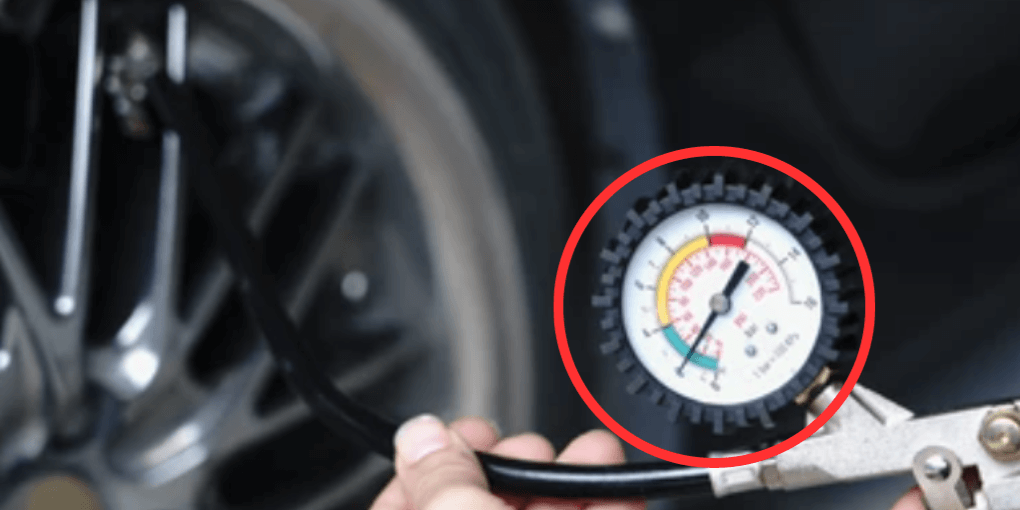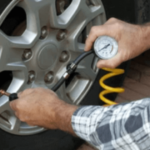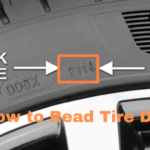How to reset tire pressure sensor, usually, you must inflate tires to the proper pressure, then use the vehicle’s TPMS reset button or drive for a few minutes.
Resetting your tire pressure sensor is a straightforward task that not only keeps your dashboard warning light at bay but also ensures your vehicle’s optimal performance and safety.
Every car has a unique method, typically outlined in the owner’s manual, which guides you through this essential maintenance procedure.
It often involves standard steps like adjusting the tire pressure to the recommended level and pressing the TPMS reset button, which is frequently located beneath the steering wheel.
For some vehicles, sensor reset is triggered simply by driving for a certain distance at a set speed. Monitoring tire pressure is crucial for fuel efficiency, tire longevity, and overall driving experience.
A reset tire pressure sensor allows for accurate readings, preventing the inconvenience of false alarms and ensuring you stay informed on the actual condition of your tires.
Introduction To Tire Pressure Monitoring
Keeping an eye on tire pressure is vital for your safety on the road. The Tire Pressure Monitoring System (TPMS) serves as your trusty co-pilot, constantly checking the air in your tires.
It alerts you when pressure drops, helping you avoid tire wear and ensuring top-notch fuel efficiency.
Let’s dive into the nuts and bolts of this system and the tiny gadget at its heart—the tire pressure sensor.
Importance Of Correct Tire Pressure
Perfectly inflated tires are key to a smooth ride. They provide numerous advantages:
- Improved safety: Correct pressure prevents accidents.
- Better mileage: Get more miles for your dollar with properly inflated tires.
- Long-lasting tires: Proper pressure ensures even tire wear.
- Enhanced handling: Experience tighter control and handling.
What Is A Tire Pressure Sensor?
A tire pressure sensor is a smart monitoring tool fitted inside your tire. It sends pressure readings to your vehicle’s computer, which triggers an alert if the pressure falls below the recommended level. Here’s a simple breakdown of its parts:
| Component | Function |
|---|---|
| Sensor | Measures the pressure inside the tire. |
| Transmitter | Sends data to the vehicle’s computer. |
| Battery | Powers the sensor and transmitter. |
Understanding these components is the first step to resetting your tire pressure sensor. Stay tuned to learn the reset process and keep your TPMS in top form.
Indications Of Tire Pressure Sensor Issues
Your tire pressure sensor is a vital component for road safety. It alerts you to problems with your tire pressure. Here are the key signs indicating issues with your tire pressure sensor.
Warning Light Illumination
The Tire Pressure Monitoring System (TPMS) light on your dashboard is a sign. When it stays on, it indicates a potential issue. This could be a sign of low tire pressure or a sensor malfunction.
Inaccurate Readings
Inconsistent or false readings are another sign. You may see a warning despite correct pressure.
Or, you might get no alert when pressure is low. Frequent calibration checks can prevent this.
Other signs include:
- Rapid pressure loss warnings, when tires are fine
- No sensor reset after correct inflation
| Issue | Action Required |
|---|---|
| Warning Light Stays On | Inspect tire pressure |
| Inaccurate Sensor Readings | Check sensors calibration |
Understanding these indications helps you maintain tire health. It ensures that your tire pressure sensor works properly. Stay alert for these signs and act promptly to ensure your driving safety.
Preparation Steps Before Resetting
Welcome to the crucial Preparation Steps Before Resetting your tire pressure sensor.
Proper preparation ensures a smooth and safe process. Let’s gather our tools and review safety steps to avoid any issues.
Gathering Necessary Tools
Equipping yourself with the right tools is essential. Ensure you have these items:
- Vehicle’s owner manual: It has specific reset instructions.
- Tire pressure gauge: Check each tire’s pressure.
- Tire inflator: Adjust tire pressure when needed.
Some vehicles also need a reset tool. Check your manual for this.
Safety Precautions
Safety cannot take a backseat. Follow these pre-reset steps:
- Park your car on a flat surface and turn the ignition off.
- Wear gloves to protect your hands.
- Ensure all tires are cool before starting.
Stay clear of busy roads or slippery surfaces. Your safety is our priority.
Step-by-step Resetting Process
We often see a light on the dashboard and wonder what to do. Resetting your tire pressure sensor is easy.
This process can ensure your tires are at the right pressure. That means safe driving and better gas mileage. Ready to learn how? Follow this guide!
Manual Reset Procedure
Most cars let you reset the tire pressure sensor manually. It is quick and needs no tools. Your car’s manual will have specific steps. Yet, the general process is as follows:
- Check all tires to make sure they have the right air pressure.
- Turn the ignition to “On.” Do not start the engine.
- Find the reset button. It might be on the dashboard or in the glove box.
- Press and hold the reset button until the light blinks three times.
- Wait 20 minutes for the sensor to refresh.
- Start the car to verify the reset is complete.
Using An Obd Ii Scan Tool
If your car needs more tech, an OBD II Scan Tool helps. This device can fix sensor issues. Local mechanics have these tools, but you can buy one too. Here’s how to use it:
- Connect the OBD II Scan Tool to the port under the dash.
- Turn on the ignition without starting the engine.
- Select the tire pressure monitor system menu on the tool.
- Choose the reset option and wait for confirmation.
Your dashboard light should turn off after this. You can then disconnect the tool. Give your vehicle a short test drive to make sure it all works.
Troubleshooting Common Reset Problems
Encountering issues with resetting the tire pressure sensor can be annoying. Simple steps often solve these problems. Let’s troubleshoot the common reset issues that drivers face.
Sensor Relearning Tips
Resetting your vehicle’s tire pressure sensor may sometimes require a relearn procedure. Follow your manual closely. Each vehicle has a unique process. Key tips include:
- Drive at speed: Some cars need a short drive to relearn.
- Proper sequence: Press reset buttons in the correct order.
- Pressure check: Ensure tires have correct pressure.
- Use a relearn tool: Certain models need a specialized device.
When To Seek Professional Help
If basic troubleshooting doesn’t work, seek a mechanic. Signs you need professional help:
| Symptom | Action |
|---|---|
| Sensor light stays on | Visit a service center |
| Flashing sensor light | Check for faulty sensors |
| Inconsistent pressure readings | Get sensors inspected |
Maintaining Tire Pressure Sensors
Proper maintenance of tire pressure sensors is crucial for your vehicle’s performance. These sensors play a vital role in keeping you safe on the road.
They alert you when tire pressure is too low, helping to prevent wear on your tires, improve fuel efficiency, and avoid accidents.
Keeping them in check is straightforward when you follow a regular schedule and are aware of tips for their long-term health.
Regular Maintenance Schedule
The key to sensor longevity is a consistent maintenance schedule. Ensuring your sensors are checked regularly will keep them operating accurately. Here is what you should include in your routine:
- Check tire pressure monthly, using a reliable tire gauge.
- Inspect sensors during every oil change for visible damage or corrosion.
- Replace sensor batteries every 5 to 7 years, depending on usage.
Tips For Long-term Sensor Health
Extend the life of your tire pressure sensors with these practical tips:
- Avoid using chemical-based tire cleaners, as they may damage the sensors.
- When replacing tires, ensure that the sensors are reinstalled correctly by a professional.
- Prevent sensor damage during winter by using dedicated winter tires and wheels.
- Keep an eye on the Tire Pressure Monitoring System (TPMS) light on your dashboard for early signs of issues.
Frequently Asked Questions On How To Reset Tire Pressure Sensor
How Does A Tire Pressure Sensor Work?
A tire pressure sensor monitors the air pressure inside your tires. It sends real-time information to your vehicle’s computer system.
If pressure falls below the manufacturer’s recommended level, it triggers a warning light on your dashboard to alert you.
Can You Reset A Tire Pressure Sensor At Home?
Yes, you can reset a tire pressure sensor at home. Most vehicles have a reset button or a sequence in the menu system.
Consult your owner’s manual for specific steps. Some require driving at a certain speed for a reset.
What Triggers Tire Pressure Sensor Warnings?
Tire pressure sensor warnings are triggered by underinflation, overinflation, temperature changes, or faulty sensors.
These cause the pressure to deviate from the recommended levels, prompting the vehicle’s system to alert the driver for safety.
How Often Should Tire Pressure Sensors Be Replaced?
Tire pressure sensors should be replaced every 5 to 10 years. However, battery life and sensor conditions may shorten this interval.
Regular checks during tire servicing can help to ensure they are functioning correctly.
Conclusion
Resetting your tire pressure sensor no longer has to be a daunting task. With the steps outlined in this guide, you’re now well-equipped to address any issues quickly and efficiently.
Remember, regular checks can prevent the stress of unexpected tire woes. Drive safely, and keep those sensors in check for a smoother journey ahead.

Sudatta is a passionate automotive enthusiast and expert in the field. With a keen eye for detail and a love for all things automotive, he shares insightful articles and reviews to ignite the automotive passion in readers.




